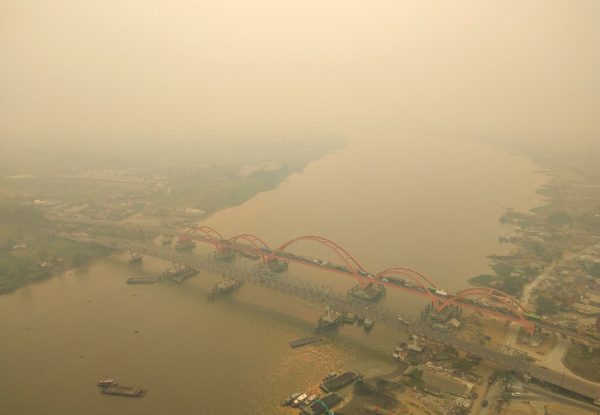Indonesia’s virus transmission figures are not promising. There is no sign of a flattening curve; the numbers keep growing. While the historic epicentre of the outbreak is the capital, Jakarta, the outer islands are at a high risk of transmission. COVID-19 cases in Central, South and East Kalimantan, as well as South Sumatra, are quickly increasing. Data shows that cumulative cases in each of these provinces is more than 1 per cent of all provinces combined.
Despite the high transmission rate, local governments have started opening their cities. South Kalimantan, for instance, implemented large-scale social restrictions in its capital of Banjarmasin and three satellite cities in May. This policy successfully limited social mobility and slowed down transmission. But many local governments started to lose control once the national government announced the implementation of a ‘new normal’ across the archipelago.
Under this ‘new normal’, the national government advised its officials to make business trips to increase government spending, promote the tourism industry and help the economy. This policy may backfire in cities on outer islands. More mobility from the epicentre of the pandemic in Jakarta will increase the risk of transmission in other regions.
The World Health Organization’s (WHO) situation reports in July and August 2020 indicate significant disparities in testing capacity between Jakarta and the rest of the archipelago. Only Jakarta achieved a WHO target of one test for every 1000 suspected cases per week. This is due to a lack of laboratory testing.
This year, transboundary haze pollution is only a moderate risk to Indonesians due to relatively milder drought conditions and the government’s effort to suppress blazes on the ground. Despite milder conditions, many are still worried that the haze caused by fires will be more severe than last year. In early July, Central Kalimantan announced a state of emergency with over 700 fires occurring before the start of the dry season. Fires also loomed in South Sumatra in early July, while the country’s National Board for Disaster Management (BNPB) indicated 717 fire hotspots between 1 January and 30 June 2020.
For years, the haze crisis was concentrated outside Java and was often overlooked by decision-makers in Jakarta. Efforts by the Indonesian government to shut down forest fire hotspots are often handicapped. Some argue this is due to the dynamic between low-ranking officials and indigenous people in the region which hinders state intervention in circumstances where a fire has been intentionally lit.
COVID-19 is feared to exacerbate the haze crisis. A recent study in the United States found that an increase of only 1 microgram of fine particulate matter (PM2.5) per cubic metre is associated with an 8 per cent increase in the COVID-19 death rate.
At its worst, a combined haze and COVID-19 health emergency will cripple the outer islands’ health systems. Hospitals in Samarinda and East Kalimantan have already experienced over-capacity.
In 2016, President Joko Widodo implemented a moratorium on burning, draining and deforesting in peatland areas to reduce haze through the country’s Peatland Restoration Agency (BRG). BRG claims that it has successfully restored 778,181 hectares of peatland area and built a peatland resilience community (Desa Peduli Gambut). While the BRG’s concern is peatland restoration, the BNPB is in charge of firefighting more broadly.
But the government has experienced setbacks due to the COVID-19 pandemic. The pandemic has prompted the government to implement the Coronavirus Relief for Indonesian Sustainable Peatland Programme, reallocating half of the funds and resources designated for firefighting to efforts to fight COVID-19. Some areas have also implemented lockdowns and social distancing, so limited labour is available for peatland restoration and fighting forest fires.
The government’s decision to cut funding is arguably an outcome of Jakarta not prioritising the outer islands. People in the outer islands have suffered the most from these crises. The forest fires in 2015 and 2019 put thousands of people in danger, many of whom suffered acute respiratory infections. The crisis also severely limited social interaction. Vulnerable populations — women, children and the elderly — were left hanging in evacuation camps established by local NGOs.
Moving forward, instead of maximising government spending for business trips to generate economic growth, the government should consider reallocating the budget to anticipate and manage the haze and higher COVID-19 case numbers. The government must better ensure that hospitals are ready for an influx of patients with respiratory problems. Re-engaging local activists and grassroots movements to prepare for what is to come should also be a priority.
At a time of crisis, people’s safety must be at the top of the government’s agenda. The best time to anticipate the impacts of haze and a pandemic is now.
Aninda Dewayanti is a research officer at the ISEAS–Yusof Ishak Institute, Singapore.
This article is part of an EAF special feature series on the novel coronavirus crisis and its impact.

